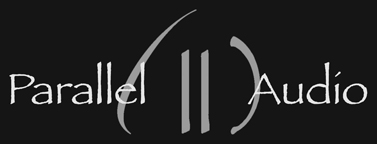Ambient Soundfield Reproduction
|
There is a good deal of debate about how to recreate ambient soundfields in the home environment. In a concert hall we get reflected sounds from all around the hall, side walls, ceiling, rear walls, and many other lesser reflections. The study of concert hall acoustics demonstrates that the early side wall reflections are most important, those forming a wide arc on both sides of the audience, from approximately 45° to 135°. This is why surround speaker placement is specified to be about 90° to 110° to the sides, not the rear of the listening area. Yet, it's the cumulative reflections from every direction that gives us the cues as to the size of the space and the feeling of being surrounded by sound. Surround channels attempt to simulate the ambient soundfield of whatever space the soundtrack is trying to present. The challenge is : How do we recreate this kind of soundfield at home with only two surround channels? The theory of Ampbiophonics suggests that to realistically recreate the effect of the concert hall, numerous direct radiating speakers need to be place around the room. Minimal room interaction is dictated to avoid the addition of the listening room's contribution to the reverberation via its own wall, floor, and ceiling reflections. Great amounts of room absorption are necessary. (Actually, it should be anechoic.) A complex plan for a dedicated room with multiple speakers, amplification, and acoustic treatment is required. Not to mention many more discreet channels of information than the standard 5.1 or 7.1. Obviously, this isn't practical for most home systems. Even if one has the luxury of a dedicated home theater, the recordings with the necessary number of discrete channels aren't available. THX, Dolby, and DTS recommend using dipole speakers for the surround channels. Dipoles radiate in opposite directions, out of phase. When the opposite phase sound waves meet in the middle, they cancel. The null is aimed at the listening area so that no direct sound reaches the ears, instead only the reflected sound from the walls is heard. This effectively provides a very diffuse soundfield. Dipoles are usually small box speakers with little bass extension, additionally the dipole cancellation reduces bass response even more. It is also specified to place them above ear level with wall mounting. But, is this for acoustic reasons or merely to mimic the sound in a commercial theater? Omnidirectional speakers are another option to consider. There aren't many makers of omnidirectional speakers. Yet, these speakers are renowned for their expansive soundstage, imaging, and large sweetspot due to their 360° dispersion. Nothing fills a room better or spreads the stereo effect wider than an omnidirectional. With these characteristics in mind, omnis naturally provide the necessary dispersion for surround channel purposes without the null or bass cancellation. The primary goal of the surround channels is non-directional sound. If we take a driver and aim it up, instead of at the ear, the direct radiation is minimized. A 360° dispersion pattern is obtained, and a greater proportion of the sound is reflected and spread around the listening area. Wall and ceiling reflections diffuse the sound for a room filling ambient effect. I've not heard any speaker configuration that does this better. When placed to the sides, anywhere from 90° to 110°, a quasi giant headphone like soundfield is created. Instead of fighting the room's acoustics, non-direct, up-firing omnidirectional speakers make use of the acoustics advantageously. There is no perfect recreation of a live event, only the illusion of it. All things considered, I have found the omnidirectional solution creates the illusion in the most practical, economically sensible, and aurally convincing way. back to the Observations main page |
|
© 2008-2026 Parallel Audio all rights reserved
|
